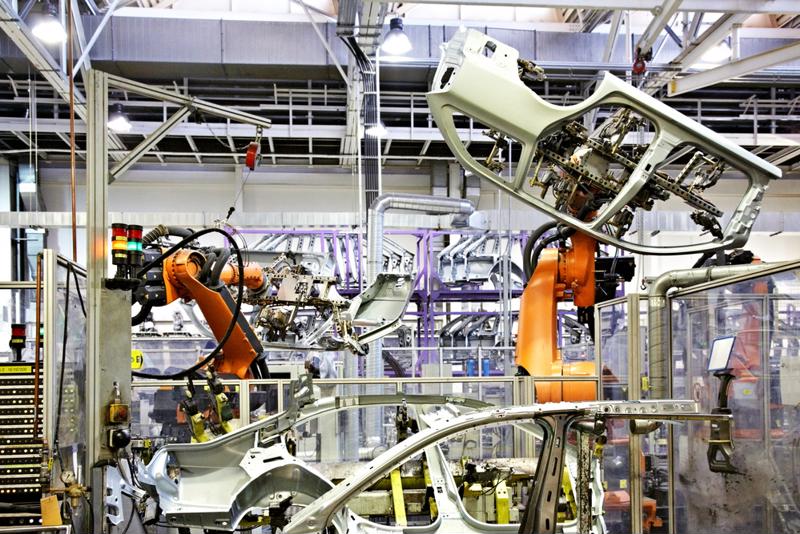
5 essential considerations for industrial Ethernet success
By Max BurkhalterJuly 12, 2016
Ethernet has slowly gained momentum in industrial settings, positioning the network protocol to become the de facto communications technology in the sector. This isn't to say that fieldbus and other connectivity options aren't still prominent - Ethernet isn't dominant yet. Instead, it has been rising and is continuing its expansion as Industry 4.0 takes hold. Organizations must consider the role that networks play in the new era of manufacturing that is emerging across the industry, and getting Ethernet investments off to a good start is critical here.
The transformation of Industry 4.0
A new industrial revolution is underway as connected devices, robotics advances and data integration into day-to-day processes all come together to change the way organizations get the job done. Essentially, the Internet of Things and other data-driven IT solutions are combining with robotics systems and similar technologies to gather, deliver and use data in new and more intuitive ways. This drives productivity and efficiency increases while also optimizing the supply chain to keep costs down and eliminate waste.
All of this adds up to transformation across industrial sectors, but it is only achievable if data can be moved across different lines of business without disruption. This is where the recent rise of industrial Ethernet becomes essential. Ethernet's ability to work seamlessly with business and industrial systems makes it a natural fit for Industry 4.0. Keep these five considerations in mind as you work to implement a new Ethernet network to support the demands of a changing industrial sector:
"Ethernet's ability to work with business and industrial systems makes it a natural fit for Industry 4.0. "
1. Interoperability
Any industrial Ethernet strategy must be taken on with consideration of legacy hardware systems that are still getting the job done and part of your organization's future. These could be fieldbuses for specific equipment types or partitions of the network that you don't want to change for any reason. Serial to Ethernet media converters can help you overcome the compatibility challenges that come up when rolling out Ethernet.
You don't have to go Ethernet everywhere to take advantage of the technology. Instead, building out Ethernet throughout your areas of operations and ensuring compatibility in areas where legacy tools make more sense creates streamlined data workflows and helps you handle the data demands emerging across the sector.
2. Power delivery
The IoT is one of the key innovation drivers across the industrial sector. This means that organizations will need to figure out how to power a large number of connected devices, and batteries or extra power cables are a hassle that add too much overhead to any IoT plan. Instead, using power-over-Ethernet capabilities empowers industrial organizations to streamline energy delivery to IoT devices and streamline deployment. Ethernet provides a major edge here, as industrial Ethernet solutions can support PoE functionality without sacrificing performance.
3. Packet stability
Dropped data packets can't be tolerated in industrial settings. Introducing determinism is one option when trying to get Ethernet networks up to demands in this area. A deterministic Ethernet system ensures packets get to their destination without being dropped by the network. Other options include using quality of service functionality or similar routing tools to optimize delivery for mission critical and safety systems, ensuring those packets don't get dropped and prioritizing sensitive traffic within the network. These advanced Ethernet capabilities - often available in specialized industrial Ethernet hardware - overcome many of the inherent weaknesses in Ethernet solutions and make them more suitable for the factory floor.

Ethernet technologies can help industrial organizations keep up with changing demands.
4. Environmental conditions
Extreme temperatures, humidity, vibrations, dust and similar issues can add up to put a huge strain on networking equipment. These conditions can cause interference in cables, disrupt signal transmission through switches or cause damages in hardware that make it difficult to sustain adequate network performance. Standard Ethernet tools aren't going to be able to get the job done. Industrial Ethernet solutions are designed with these circumstances in mind, however, and the rugged, hardy infrastructure will withstand the unique conditions that emerge in manufacturing environments and empower organizations to transform their networks.
5. Flexibility
Change is happening quickly in the industrial sector, and it isn't about to stop. The rise of Industry 4.0 is just the beginning of a new era, and organizations can't afford to put in a network that gets the job done now, but limits their flexibility moving forward. Ethernet's already pervasive use across a variety of sectors make it more naturally suited to an environment that requires flexibility than legacy industrial connectivity systems. However, you must also consider how much bandwidth is going to be available within the network, how cable architectures will limit the physical expansion or adjustment of infrastructure and how you will be able to deal with emerging device types - including those that may require a wireless connection.
Building for flexibility is key when establishing an industrial Ethernet network. Be sure to design with the future in mind to avoid costly and complex changes later down the line.
Industrial Ethernet tools can support the transformation happening in manufacturing, and keeping these five issues in mind can help you find success when deploying a new network.
Perle has over 516 models of Managed Industrial Ethernet Switches with the vast array of options including 10/100/1000 Ethernet, PoE, fiber and combo ports. Perle IDS Industrial-grade Ethernet Switches are ideal for the harsh environments found in industrial factory systems and outdoor applications.



